Title & Code of Module Communications G30001
Assessment Technique Case Study and Oral Skills
Weighing 25% (250 divided by 10)
Title Case Study
Guidelines:
A case study on information flow within an organization familiar to the learnerThe case study will provide evidence of research and analytical skills, knowledge of communications theory and ability to present information visually. It should be word processed, with graphics/diagrams/charts etc.
Assessment Criteria:
Research skills, notes, sources etc (50)
Analysis of situation, conclusions and recommendations (70)
Knowledge of communications theory, use of terms, key players/factors identified, application theory (60)
Use of graphs/charts/diagrams to explain findings clearly (40)
Knowledge of communications theory, use of terms, key players/factors identified, application theory (60)
Use of graphs/charts/diagrams to explain findings clearly (40)
Presentation, layout, structure, grammar, spelling, punctuation (30)
Youtube Video
Evaluating Web Sites Tutorial
Uploaded by researchtutorials on 20 Oct 2008
Case study analysis
Youtube Video
Excel 2007 Demo - Create charts
Uploaded by DemoTrainer on 10 Jun 2007
Communications theory
The word communication means to share, impart or make common. It comes from the Latin
word communicaire. Communication is an active process that is continually changing and
evolving. How well we communicate is often determined by how easily we can share or
impart information or find common ground with other people.
word communicaire. Communication is an active process that is continually changing and
evolving. How well we communicate is often determined by how easily we can share or
impart information or find common ground with other people.
Language changes overtime and someone like Shakespeare may have difficulty understanding “textspeak”. Everytime we speak we put together a selection of words we may have never used before. 2 people communicating with each other may have no idea where they will end up in conversation.
What Reasons Do We Have to Communicate?
-Survival
-Co-operation
-Personal needs
-Relationships
-Persuasion
-Power
-Societal needs
-Economy (buying and selling)
-Information
-Making sense of the world
-Decision making
-Self-expression
Discuss in class examples of the reasons for communication as highlighted above. Can you give a real world example as to why any of the points above are reasons to communicate?
Have a look at this video made by the Infoasaid project to highlight the importance of two way communication to humanitarian organisation's emergency programs when natural disasters occur.
Communication Is Aid
www.infoasaid.org
For Communication to be Effective:
-Effective communication is about conveying your message to others clearly and minimising
dangers for misinterpretation
dangers for misinterpretation
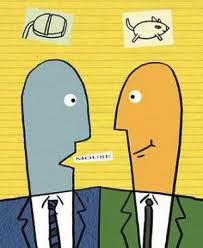 |
| Example of how information can be misinterpreted |
-Effective communication is also about
receiving information from others, with
minimal distortion
receiving information from others, with
minimal distortion
What is the communication process?
The communication process is an important process by which humans communicate with each other.
There are THREE basic elements which are central to the communication process.
1. The audience
How the audience, message and channel elements factor into the communication process:
 | ||
| The Communication Process |
Lets say the person on the left in the diagram above wants to send a message to the person
the right.The man on the left has to decide what language the man on the right will need in
order to understand the message.Also the man on the left has to take into account societal
factors such as the relationship between them and the context of the message These 3
factors of language, relationship with each other as well as the context of the conversation
will influence the tone of their conversation. Next, the appropriate channel needs to be
selected to communicate the message. Typical channels of communication include:
Writing, face-to-face speaking, having a telephone conversation, video-call, email, fax, SMS
or even through instant online messaging providers such as Instant Messenger.The man on
the right may give feedback to the man on the left to further his understanding of the message
and having more clarity regarding the appropriate response.
The picture below gives another explanation of the communication process.
the right.The man on the left has to decide what language the man on the right will need in
order to understand the message.Also the man on the left has to take into account societal
factors such as the relationship between them and the context of the message These 3
factors of language, relationship with each other as well as the context of the conversation
will influence the tone of their conversation. Next, the appropriate channel needs to be
selected to communicate the message. Typical channels of communication include:
Writing, face-to-face speaking, having a telephone conversation, video-call, email, fax, SMS
or even through instant online messaging providers such as Instant Messenger.The man on
the right may give feedback to the man on the left to further his understanding of the message
and having more clarity regarding the appropriate response.
The picture below gives another explanation of the communication process.
Here is a video which uses the model of a message sent through a paper aeroplane to demonstrate the communication process:
Youtube Video
Communication Theory
Uploaded by bluetommb on 4 Dec 2009
Youtube Video
Communication Theory Definitions
Message: The information you want to communicate
Encoding: The process of transferring info you wish to communicate into a form that can be
sent and decoded at the other end. Encoding is is the process by which information from a
source is converted into symbols to be communicated
Channel: The method used to communicate eg face to face meetings, telephones & video
conferencing, letters, emails, memos, reports
Decoding: the process of transforming information from one format into another, usually
information sent from the sender.
Receiver: Must understand your message and is at the receiving end of the communication
channel. They receive decoded messages or info from the sender. Sometimes, the receiver
has to decode the message themselves
 |
| Example of positive feedback |
Feedback: is the verbal and nonverbal reaction to a communicated message. Close attention to feedback can give the sender confidence that the message is understood. Feeding back part of the output so as to increase the input is positive feedback; feeding back part of the output in such a way as to partially oppose the input is negative feedback.
Context: the relevant constraints of the communicative situation that influence language use, language variation, and discourse. This may include the surrounding environment or broader culture (corporate culture, international culture). It can be the surroundings, circumstances, environment, background, or settings which determine, specify, or clarify the meaning of the message
 |
| A famous still image capturing John McCain which went viral. It significantly damaged his chances of appearing strong in the US 2008 election |
In order for the transfer of information to qualify as communication, the recipient must
understand the meaning of the information transferred to them. If the recipient does not
understand the meaning of the information conveyed to them, communication has not taken
place.
How is the communication process being hampered in this clip below from the TV show Fawlty Towers?
Fawlty Towers - Communications Problems
Communication Flows in an Organization/Communication Routes
All organisations need to use communications to survive, some companies use communication better than others which can help to cut costs and maximise productivity. Others are slow regarding how information flows through the organisation and can be slower to react to sudden changes in the marketplace.
 | ||||||
| Communication routes within an organisation |
In an organization, communication flows in 5 main directions-
1-Downward
2-Upward
3-Lateral
4-Diagonal
The first 4 points are methods of internal communication as they happen within
the organisation
1 Downward Communication
1 Downward Communication
This communication flow is used by the managers
to transmit work-related information to the
employees at lower levels. Employees require this
information for performing their jobs and for
meeting the expectations of their managers
to transmit work-related information to the
employees at lower levels. Employees require this
information for performing their jobs and for
meeting the expectations of their managers
 |
| Can you think of any disadvantages of downward communication? |
Why Downward communication is used by managers
- Providing feedback on employees performance
- Giving job instructions
- Providing a complete understanding of the employees job as well as to communicate to them how their job is related to other jobs in the organization.
- Communicating the organizations mission and vision to the employees.
- Highlighting areas of attention
Downward communication starts with top management and flows down through
management levels to line workers and non-supervisory personnel.
management levels to line workers and non-supervisory personnel.
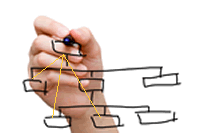 The major purposes of downward communication are to
The major purposes of downward communication are toadvise, inform, direct, instruct, and evaluate employees
and to provide organization members with information
about organizational goals and policies.
Most effective if top managers communicate directly with
their immediate supervisors and that those supervisors
communicate with staff
their immediate supervisors and that those supervisors
communicate with staff
Problems with Downward Communication
-Employees can feel confused, not informed or powerless and might fail to carry
out their task
out their task
-No room for employee feedback
-Downward communication is likely to be filtered, modified, or halted at each
level as managers decide what should be passed down to their employees.
level as managers decide what should be passed down to their employees.
-Sometimes, managers do not provide employees with the information they need
to carry out their tasks effectively
to carry out their tasks effectively
-Managers often withhold information to keep employees dependent on them
2 Upward Communication
-Upward communication deals with the information flow from the bottom up,
from the subordinates to the superiors
-Upward communication is a response to the downward communication
from the subordinates to the superiors
-Upward communication is a response to the downward communication
A disadvantage of downward communication was the lack of feedback. Upward
communication gives the employee a chance to comment or constructively
criticise senior management's policies by reporting to their department
managers, who in turn, report to the senior manager.
communication gives the employee a chance to comment or constructively
criticise senior management's policies by reporting to their department
managers, who in turn, report to the senior manager.
You can see how the communication process described earlier is becoming more
relevant here as shown below
relevant here as shown below
 |
| How do you think the communication process is used in upward communication? |
Upward communication enables managers to understand if their messages have
been heard and understood by employees.
been heard and understood by employees.
Upward communications may include judgments, estimations, propositions
complaints, grievance, appeals, report
complaints, grievance, appeals, report
Management can then be informed of the progress being made at lower level
or if they have suggestions to better implement management policies and
strategies.
strategies.
Advantages of Upward Communication
Employee morale is boosted
Communication is more efficient
Improvements can be made in the managerial decision making process
Greater co-ordination through the organisation.
Ideas and proposals are shared to give a greater knowledge of the people in
your organisation
your organisation
Saves time
Greater co-operation with team members
Helps collectively solve problems and conflicts within the organisation
Disadvantages of Upward Communication
-Upward communication is likely to be filtered, condensed or altered by
middle managers who see it as part of their job to protect upper
management from nonessential data originating at the lower levels.
-Middle managers may keep information that would reflect unfavourablyon
themfor reaching their managers or claim the idea as their own
-Upward communication is likely to be filtered, condensed or altered by
middle managers who see it as part of their job to protect upper
management from nonessential data originating at the lower levels.
-Middle managers may keep information that would reflect unfavourablyon
themfor reaching their managers or claim the idea as their own
3 Lateral Communication
Communication is lateral (also known as horizontal) when it operates on the
same level. They mat be in different functional levels, but in the hierarchical
structure of the organisation, they are at the same level eg supervisors from
different departments.
same level. They mat be in different functional levels, but in the hierarchical
structure of the organisation, they are at the same level eg supervisors from
different departments.
Information is often co-ordinated between departments at this level.
Advantages of Lateral communication
Tasks accomplished more effectively
Helps solve problems
Greater teamwork
Helps build goodwill between departments
Improvements in efficiency
4 Diagonal Communication
Communication that takes place between a manager and employees of other
workgroups is called diagonal communication. It generally does not appear
on organizational charts. For instance - To design a training module a
training manager interacts with an Operations personnel to enquire about
the way they perform their task.
workgroups is called diagonal communication. It generally does not appear
on organizational charts. For instance - To design a training module a
training manager interacts with an Operations personnel to enquire about
the way they perform their task.
5 External Communication
Communication with those outside the company is external communication.
Suppliers and customers are communicated to by supervisors. For example to
raise capital for the business, the manager may communicate with a bank
manager.
Suppliers and customers are communicated to by supervisors. For example to
raise capital for the business, the manager may communicate with a bank
manager.
Advantages of External Communication
It helps the sales volume of the organisation
Increases positive public relations (PR) with the customer
Operations run more efficiently
Helps profit
Helps achieve the goals of the organisation and increase customer
satisfaction
satisfaction
The Differences between Formal and Informal communication
Formal Communication is concerned with the hierarchical chain of
command. Communication flows depending on how the organisation has
been formally arranged. eg where there are many departments and no
flexibility in terms of job duties and responsibilities. Formal communication
strictly adheres to the rules, conventions and ceremony of the
organisation.Communication through a rigid channel of command can
obstruct the flow of free communication.It is often considered to be time
consuming and can lead to a lot of distortion.
command. Communication flows depending on how the organisation has
been formally arranged. eg where there are many departments and no
flexibility in terms of job duties and responsibilities. Formal communication
strictly adheres to the rules, conventions and ceremony of the
organisation.Communication through a rigid channel of command can
obstruct the flow of free communication.It is often considered to be time
consuming and can lead to a lot of distortion.
Methods of formal communication include:
Department meetings
Conferences
Telephone calls
Company news bulletins
Special purpose publications and interviews
Informal Communication is often known as the grapevine. This style of
communication does not follow traditional authority lines like you would
with formal communication.Informal communication occurs according to the
needs of individuals. Often, this communication is oral.
with formal communication.Informal communication occurs according to the
needs of individuals. Often, this communication is oral.
 |
| When one person has some information of interest, they pass it along informally to a group |
A disadvantage of informal communication is that the information may be
based on rumour and therefore it may not be precise. This could harm
and not help the organisation. Fixing the flow of communication after
something has gone wrong is more difficult as it will be unclear where the
responsibility for the communication originated from.
based on rumour and therefore it may not be precise. This could harm
and not help the organisation. Fixing the flow of communication after
something has gone wrong is more difficult as it will be unclear where the
responsibility for the communication originated from.
both formal and informal communications are required
It is how we make sense of the world by how we see and perceive it
It is the way how we select, organise and interpret info through our senses of
sight, hearing, smell, taste and touch
sight, hearing, smell, taste and touch
Our senses are not always 100% reliable, sometimes we may filter out
unnecessary info
unnecessary info
Perceived Information is then integrated and analysed before a decision is
made
made
Our perception is often our reality. Sometimes this can mean that we don't
always see what is really there as our perceptions are often formed through
our experience of life as shown in the diagram below
always see what is really there as our perceptions are often formed through
our experience of life as shown in the diagram below
Perceptions in Advertising
Do companies try to manipulate our perceptions to purchase their product or
message?
message?
 |
| Marlboro Man |
 |
| Anti smoking ad |
 |
| Hunky Dorys campaign to sponsor Irish Rugby |
Youtube Video
Guinness Quarrel
Uploaded by heavydawson on 14 Feb 2007
Youtube Video
I still have a soul (HBO Boxing)
Youtube Video
Dove - Evolution Commercial (higher quality)
Uploaded by zephoria on 15 Oct 2006
Youtube Video Mac Ad - Think Different - Apple
Uploaded by PeterGreen125 on 26 Apr 2006
 |
| Nike ad featuring footballer Wayne Rooney |
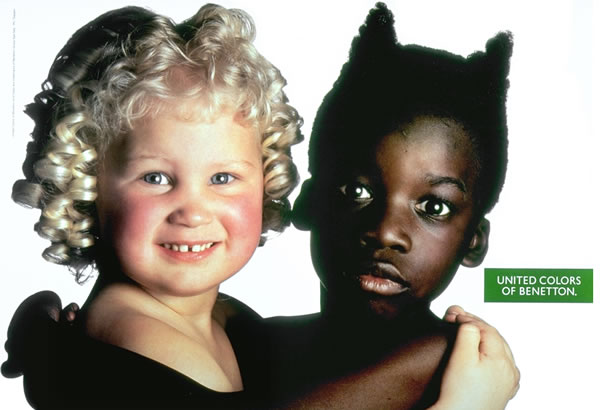 |
| Benetton have reguarly been deliberately controversial with their ads. Why do you think they do this? |
How do you feel about the product after you have seen the advert?
Has your perception about the company changed in any way?
People Perception
Has your perception about the company changed in any way?
People Perception
-People perception is based on only a fraction of a whole person (like we can
only see 10% of an iceberg) and can be problematic.
only see 10% of an iceberg) and can be problematic.
-Stereotyping intentionally or unintentionally can lead to unfortunately to
obstacles towards communication
obstacles towards communication
-Assumptions and categorisation and judgements can be made on perception (eg
who to advertise to)
who to advertise to)
-How we perceive people on their appearance or role is matched to our own
expectations and experience
expectations and experience
-The process of perception can alter what you see
-We perceive people initially through their appearance: size, hair, clothes, skin
etc. Whats the problem with this?
etc. Whats the problem with this?
Have alook at the image below. Have you made any
preconceived judgements about this person already?
Youtube Video
The Sophie Lancaster Story
Uploaded by xWinterBreeze on 29 Mar 2008
Your perception may make your reality. You can see from the diagram below how 2 different worldviews are formed by how we see various issues
Here is an advert which illustrates the effect of perception we receive from upbringing as children on our worldviews
Youtube Video
Children See, Children Do
Uploaded by jab513 on 10 Dec 2006
The Columbine high school shootings in the USA in 1999 saw the killing of 12 school students by two fellow classmates. Perceptions about what influenced them on this murder rampage abounded in the media, with blame attributed to violent computer games, angry music and in particular the musician Marilyn Manson. The allegations turned out to be unfounded. Celebrity documentary maker Michael Moore conducted an interview with Marilyn Manson about his thoughts on the shooting incident. Here is a snippet from that interview so you can see how perception can lead to unneccessary bias:
Youtube Video
Marilyn Manson - Bowling For Columbine
Uploaded by NothingFanboy on 18 Feb 2009
Do you think you have been stereotyped for being Irish?Has it been positive or negative? Here are some examples below of Irish stereotypes
Uploaded by japie251 on 11 Apr 2011
Youtube Video
Family guy Peter lands in Ireland
Uploaded by japie251 on 11 Apr 2011
Youtube Video Simpsons In Ireland
Uploaded by roversboy144 on 1 Mar 2011
Ask yourself when looking at the following pictures, how your perception is affected?
Non Verbal Communication
-Communication without words
-80%
“Actions Speak Louder Than Words.”
It's not always what you say but how you say it which can help deliver the effectiveness of your message
Youtube Video
Body Language at Work by Peter Clayton
Uploaded by 121series on 18 Dec 2008
žFacial expression
Universal facial expressions signify anger, fear, sadness, joy and disgust. Thus, if you smile frequently you will be perceived as more likable, friendly, warm and approachable. Smiling is often contagious and a person will react favorably. We have 250,000 facial expressions.
Your eye-contact can give clear indicators regarding whether you are telling the truth or not.Have a look at these 2 short video clips to see what I mean:
Youtube Video
Anthony Weiner Scandal: Body Language Similarities to Bill Clinton, Tiger Woods, Elliot Spitzer
Uploaded by ABCNews on 9 Jun 2011
Body Language Breakdown: Obama on '60 Minutes', Trump, and the Royal Wedding
Uploaded by FoxNewsInsider on 13 May 2011
Posture
-Your posture–including the pose, stance and bearing of the way you sit, slouch,
stand, lean, bend, hold and move your body in space affects the way people
perceive you.
stand, lean, bend, hold and move your body in space affects the way people
perceive you.
-Mirroring the other person in your posture style, where your left side complements their right side can increase the likelihood of a favourable perception of the communicator.
-Displaying a forward lean or a decrease in a backwards lean also signify
positive sentiment during communication.
positive sentiment during communication.
Youtube Video
Body Language - Open Posture Vs. Closed Posture
Uploaded by BodyLanguagePro on 19 Oct 2009
Gesture
A gesture is a non-vocal bodily movement intended to express meaning. They
may be articulated with the hands, arms or body, and also include movements of
the head, face and eyes, such as winking, nodding, or rolling one's eyes.
may be articulated with the hands, arms or body, and also include movements of
the head, face and eyes, such as winking, nodding, or rolling one's eyes.
If you fail to gesture while speaking, you may be perceived as boring, stiff an
unanimated.
unanimated.
Youtube Video
Body Language: The Meanings of Hand Gestures
Uploaded by positivesimona on 28 Oct 2009
Physical Touch
Touches that can be defined as communication include handshake, holding
hands, kissing (cheek, lips, hand), back slapping, give five, a pat on the shoulder,
and brushing an arm. The meaning conveyed from touch is highly dependent
upon the context of the situation, the relationship between communicators, and
the manner of touch.
hands, kissing (cheek, lips, hand), back slapping, give five, a pat on the shoulder,
and brushing an arm. The meaning conveyed from touch is highly dependent
upon the context of the situation, the relationship between communicators, and
the manner of touch.
Youtube Video
10 Types of Handshakes
Uploaded by NewFinancialWisdom on 1 May 2009
1. When you meet someone for the first time, how do you greet him or her?
2. Do you use the same greeting for men as for women?
3. How do you greet a friend of the same sex as yourself?
4. How do you greet a friend of the opposite sex?
5. How do you greet members of your family: children adults old people?
6. Describe three gestures you use frequently and say what they mean.

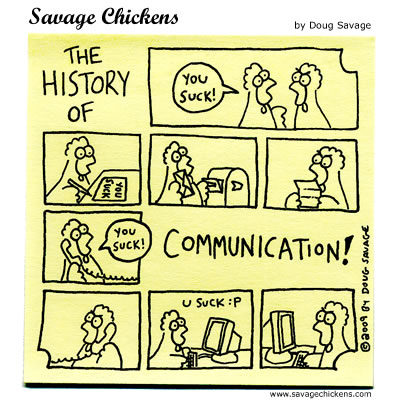












 Manage
Manage

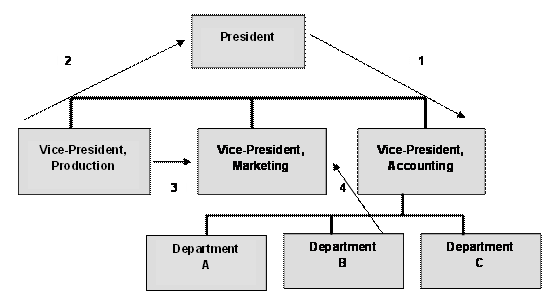















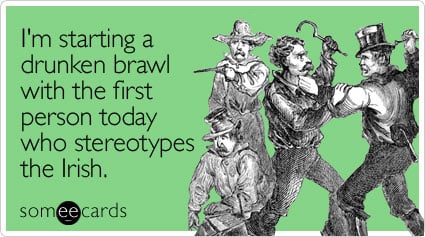











No comments:
Post a Comment